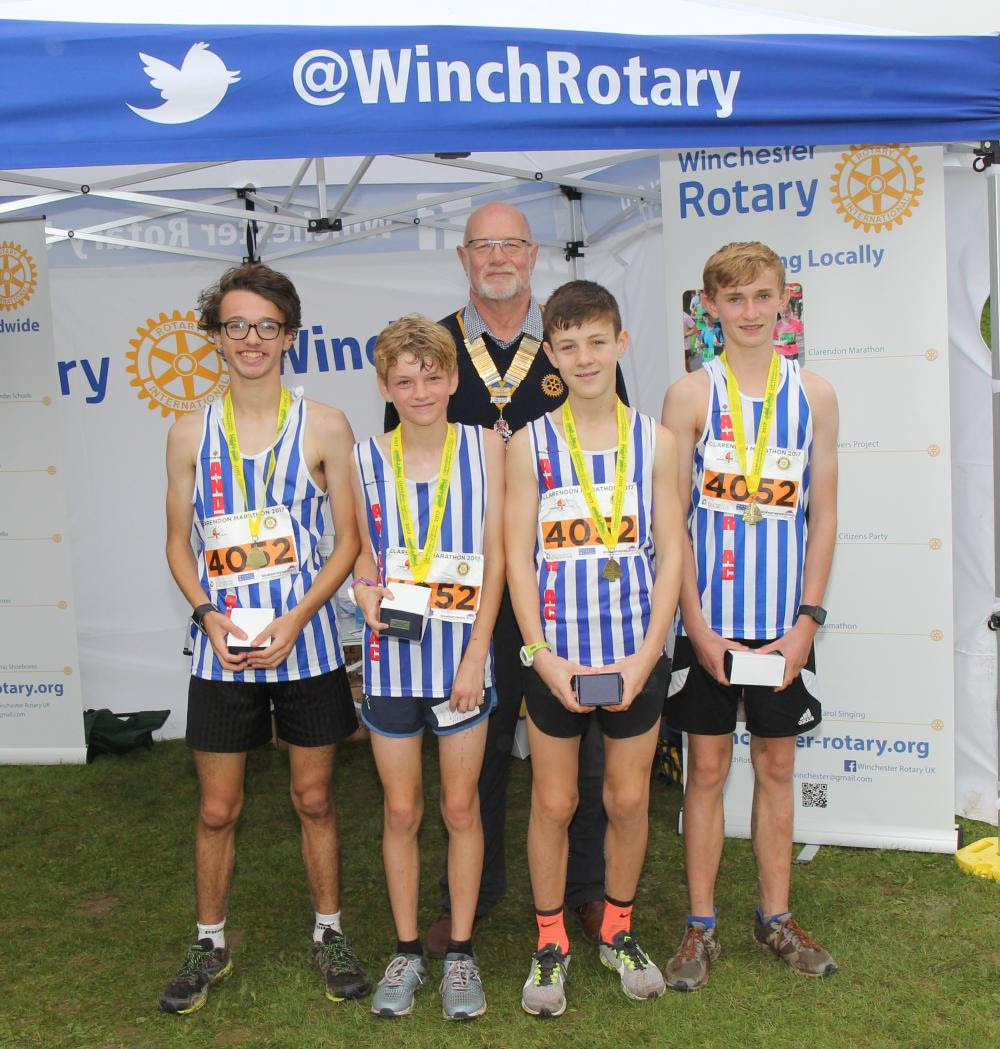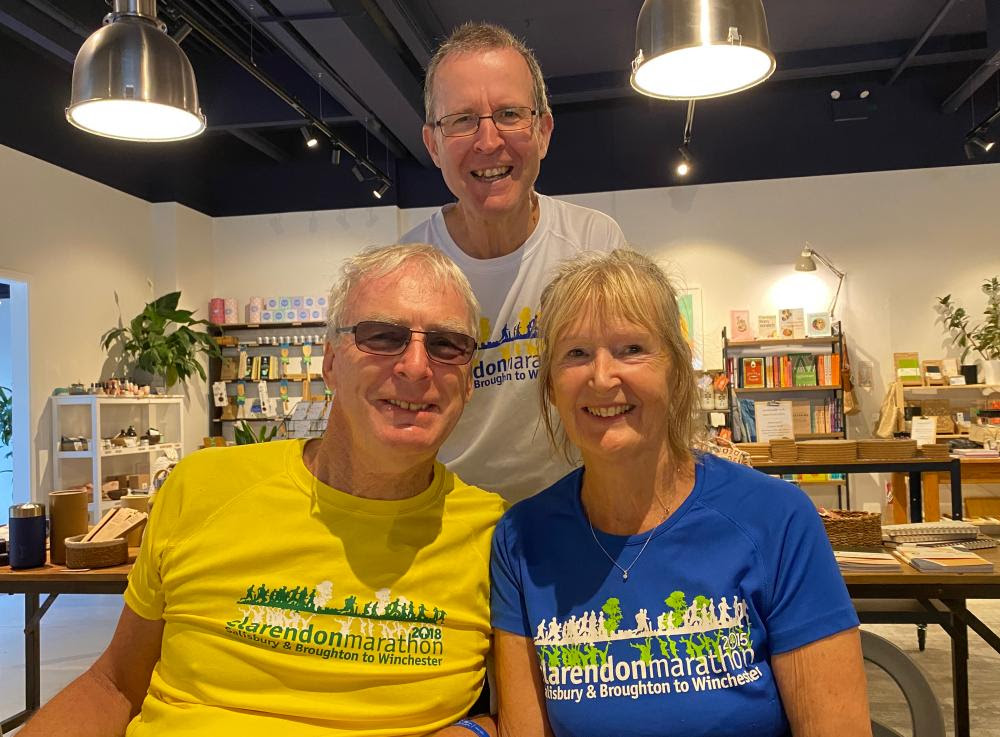Relay Relationships of the Clarendon
Salisbury to Winchester
An Ethnographic Review
By Geoff Meads
Emeritus Professor of Wellbeing Research, University of Winchester, and Clarendon Marathon runner.

Diet, sleep, exercise – of course – and nowadays especially mental health are the elements of Wellbeing which attract most media coverage and public attention. While these may chime with many people’s perceived needs for individual wellness they do actually represent only half of the picture. As researchers of the subject area increasingly recognise, equally important are the social capital and spirituality aspects of wellbeing. Indeed, for a truly holistic approach it is these dimensions that create the relationships which bring all the elements together.
From this perspective we can see that the Clarendon has now developed into a comprehensive and multi-dimensional wellbeing experience. Especially since the onset of the Covid pandemic its interactions across the whole year have become more about sharing the experience, and learning, than simply undertaking a physical endurance challenge. The regular runners’ stories despatched by JJ invariably tell of generosity and sacrifice. The membership of the organising committee becomes more diverse and friendship based each year; and the charities supplying marshals grow more cross-generational as overall volunteer numbers increase and exceed the 200 mark. Clarendon encounters and exchanges now take place daily in person and on the Internet. There is a spirit of common purpose and reciprocity right across the Clarendon movement.
As the hub for this Wellbeing Network the profile of the Clarendon races reflect its relationships. The staggered starts enable an ever wider range of runners, and walkers, to join in. There are forest fun runs alongside the main half and full marathons with the use of village hall venues engaging local residents. A particularly distinctive feature of the Clarendon Marathon is not just its relay teams but their number. This year, with still a month to go until the Start there are already more than 50 relay teams signed up, each with four members. By the time of the race, approaching a quarter of the thousand or so competitors will be relay runners. This means lots of pairs, trios and foursomes, sometimes well established and sometimes new: a coming together as partners for the event itself. Positive new friendships and connections are the outcome, and these relationships mean there are more opportunities to further extend the wellbeing networks into other healthy pursuits.
Since its inception back in the last century such relationships have been at the heart of how the Clarendon operates. Quite unlike many comparable race events - which often rely on small clusters (and sometimes elite cliques) of running enthusiasts - the Clarendon is a model exercise of contemporary ‘stakeholding’ or collaborative practice. Each of the 200 plus volunteers has their own particular and significant contribution. To attend a monthly one hour organising committee on Zoom is to meet 25 others from occupational sectors which range across county borders, public services, commercial companies, charities and social enterprises. Specifically there are, amongst others, committee members who come from local councils, the armed forces, academia and advertising, property development and construction, the legal and medical professions, and, of course, IT. Ages span 40 years: multi-generational and mixed gender, and many are actually non-runners.
For most of those on the committee it can be the richest experience of diversity and inclusion they enjoy in daily life. And of course this collaborative management model extends to the event’s operational framework. The course is split into six linked sections, each with groups of marshals drawn from a different Clarendon sponsored local charity. The Rotary sponsorship stems from three clubs across two counties and their cathedral cities. At least a dozen Winchester Rotarians help with signposting and Start arrangements alone. Seven local authorities approve and advise on the event. And then there are the aforementioned relay teams. Each may be understood as a fellowship unit, and all of them represent the kind of informal networks that are so important for personal and public health today: all socially interactive and some at least characterised by spiritual bonds.
As expressions of their wellbeing roles the names of these relay terms tell the story: the ‘Healthy IBMers’, the ‘Perham Collective’, ‘Molly’s Boys’, and, the unmistakable ‘Hearts and Tarts’’. Contemporary social scientists study how informal networks with one focus have the novel capacity to overlap and integrate with others which have complementary interests. Especially for seniors such organic links are crucial to their sense of wellness in contemporary civil society, at a time when reliance on such institutions as the NHS is becoming insufficient. A typical local case example is the personal trainer doubling up as a life coach; who recommends an alternative therapist; who then suggests a counsellor with a mindfulness routine; where supplementary Yoga sessions are signposted; and so the sequence goes on. At each stage there are quite naturally fresh connections and both new relationship investments and dividends on offer.
Academic researchers would term the Clarendon a ‘Wellbeing Hub’ because it is an exemplar for the development of these healthy networks. Having this function helps to ensure the longevity of the event. Long may it continue to flourish!
Its relationships mean we can be confident that it will.





